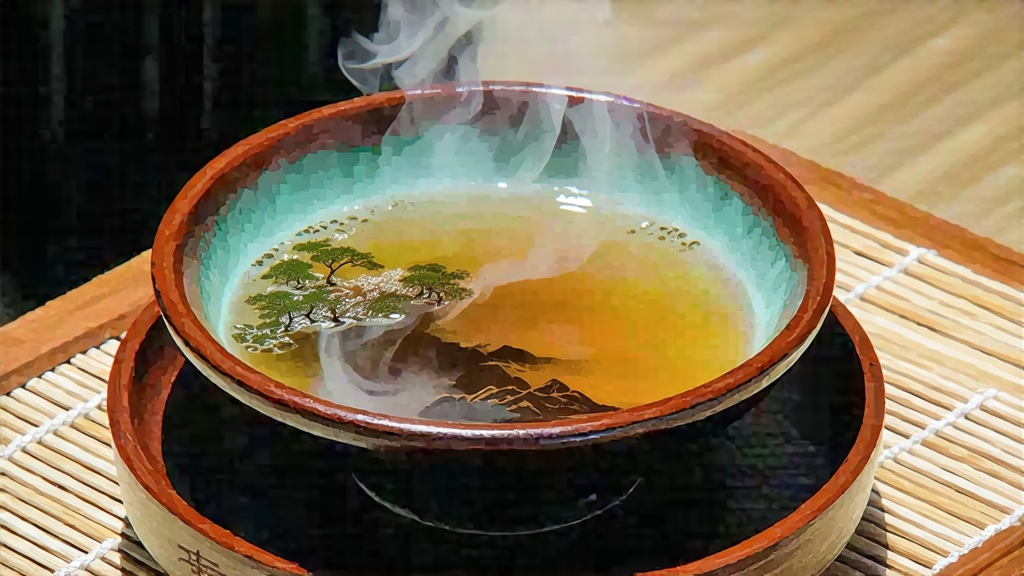
Rising like a jade dragon’s spine through the clouds of central Taiwan, the Alishan mountain range has, for almost two centuries, coaxed tea bushes into producing one of the most fragrant oolongs ever cupped. Alishan High-Mountain Oolong—often shortened simply to “Alishan Qing Xin”—is not a generic label but a protected origin tea that must grow between 1,000 and 1,400 m, be harvested by hand before the monsoon fog lifts, and undergo a precise 30–35 % oxidation that hovers on the green side of the oolong spectrum. The result is a liquor the color of pale topaz that smells of orchards in morning mist and finishes with the cool minerality of alpine stone.
Historical roots
Tea first climbed Alishan in 1842, when Lin Feng-chi, a Fujianese settler, carried Qing Xin (literally “Clear Heart”) cuttings from Wuyi to Chiayi County. The bushes thrived in the diurnal temperature swing—often 15 °C between dawn and noon—creating a natural “slow growth” condition that condensed aromatics inside every leaf. By 1895, Japanese agronomists mapping the island’s highlands noted that Alishan’s winter fog resembled the terroir of Uji, and they established experimental stations that refined plucking standards still used today. After Taiwan’s tea renaissance in the 1980s, Alishan oolong became the flagship high-mountain style, eclipsing lower-elevation Tie Guan Yin in domestic auctions and winning the 1999 Brussels Monde Selection Gold Medal, the first Taiwanese oolong to do so.
Micro-terroir and cultivar
Within Alishan, three micro-zones are now officially recognised: Shizhuo (stone table), Zhonghe (middle river), and Teofan (bamboo peak). Shizhuo’s north-facing slopes receive only four hours of direct sun; the leaves remain supple, yielding a lily-like bouquet. Zhonghe sits on red lateritic soil rich in iron, giving a subtle cinnamon note, while Teofan’s constant cloud cover produces higher amino acids and a creamier body. Regardless of zone, only the Qing Xin cultivar is permitted for authentic Alishan oolong. Garden managers prune the bushes into “level umbrella” canopies that allow pickers to stand upright—a rarity in Asia’s mountainous gardens—and every row is intercropped with Taiwania cypress to buffer wind and fix nitrogen naturally.
Plucking calendar
The mountain’s climate squeezes the harvest window into four fleeting seasons: spring (early May), summer (late June), autumn (early October), and winter (mid-November). Spring tea, kissed by winter dormancy, carries the highest linalool content and is the most sought-after. Pickers arrive at 5 a.m., while dew still weighs down the two-leaf-and-a-bud sets. They sing in Amis dialect to keep rhythm—every fifth verse signals a rest so that baskets never compress the tender tips. A master leaf receiver inspectes each pluck under a 5,000-lux LED lamp; any reddish edge means over-maturity and the shoot is rejected for roasted oolong instead.
Crafting the cloud leaf
Within ninety minutes of plucking, the leaves reach the on-mountain factory, a cedar-plank building set on stilts to encourage airflow. The first step is solar withering: trays of leaves are slid under tempered-glass panels that filter UV yet trap infrared, raising leaf temperature to 28 °C without bruising. After twenty minutes, the trays are transferred indoors for “cooling shock” at 18 °C, a technique that locks in greenness while initiating enzymatic oxidation. Over the next six hours, artisans perform five tumbling cycles in bamboo drums—each rotation lasts exactly 45 seconds at 18 rpm, calculated to rupture 12 % of cell walls and release catechins without coarse damage. The moment leaf edges turn jade-gold, oxidation is halted by a 220 °C “kill-green” roast for three minutes, hot enough to denature polyphenol oxidase yet brief enough to preserve floral volatiles. A unique “cloud press” follows: semi-oxidised leaves are wrapped in pure-cotton cloth and compressed into 12 kg toroids, then rolled 300 times on a 38 °C jade table whose thermal inertia mimics the warmth of human palms. The cloth is unwrapped, leaves fluffed, and the